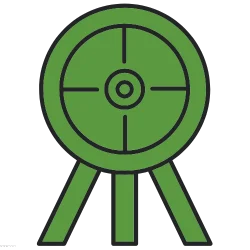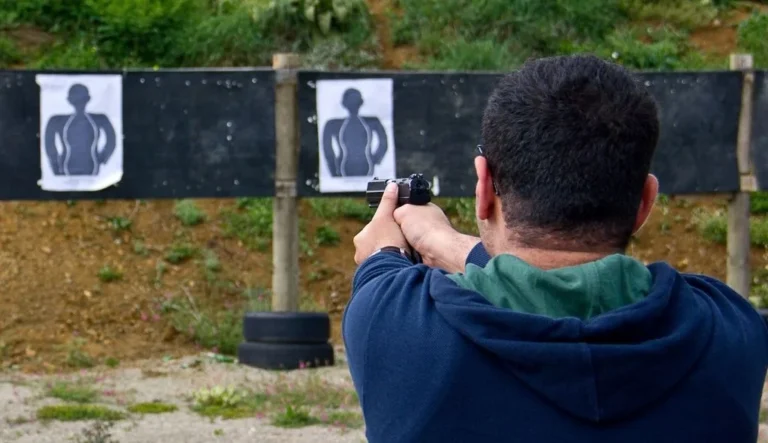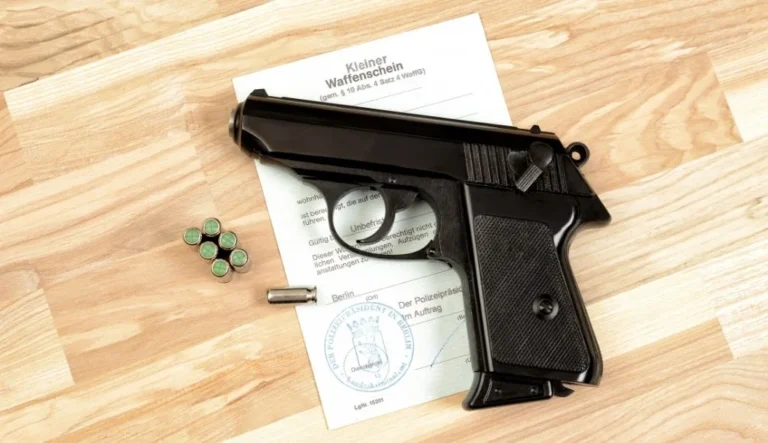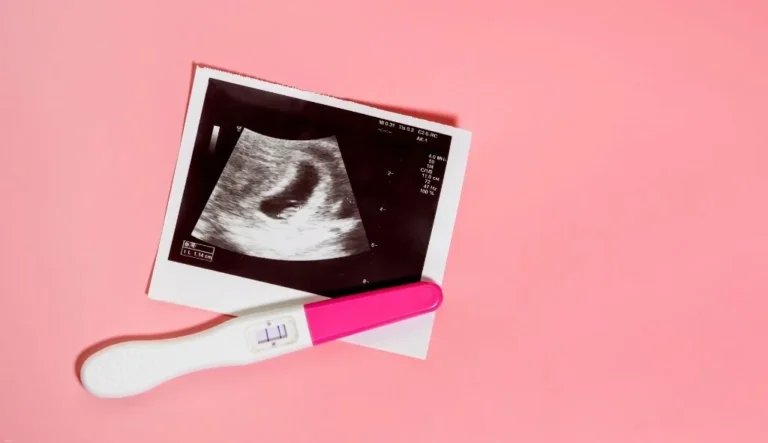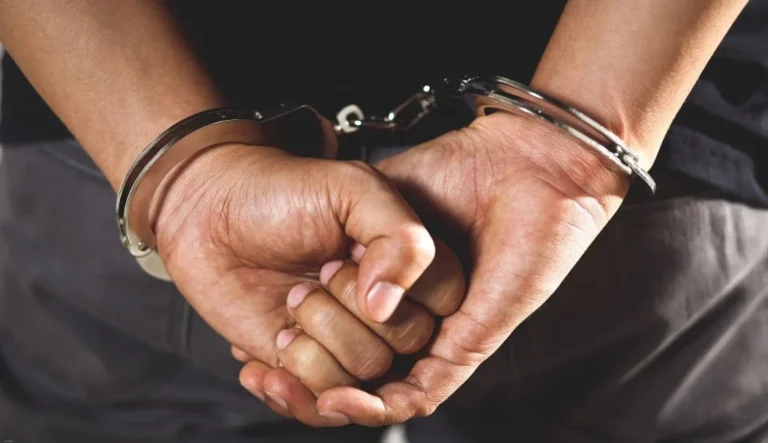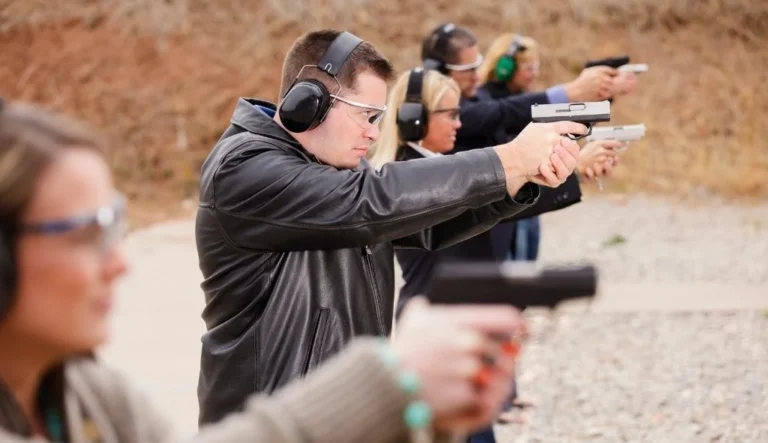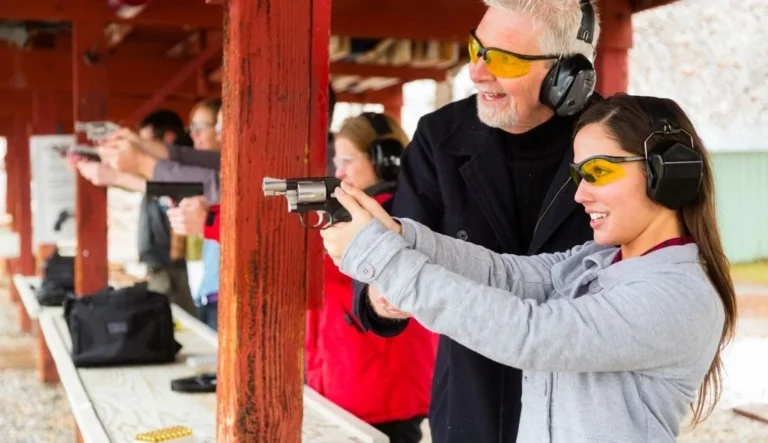If someone is downrange at a shooting range, immediately cease fire, unload your firearm, and step back from the firing line. Do not handle any firearms or ammunition until the range is declared safe and clear.
Understanding Range Safety and Etiquette
Safety is the top priority at any shooting range. Knowing how to act when someone is downrange is crucial for preventing accidents and ensuring a safe environment for all shooters. This article will cover the essential steps to take when someone is downrange, as well as general range safety rules and etiquette.
What Does “Downrange” Mean?
Before we dive into the proper procedures, it’s important to understand what “downrange” means in the context of a shooting range. Downrange refers to the area beyond the firing line where targets are placed. This area is off-limits to shooters when the range is “hot” or active.
The Importance of Range Commands
Range commands are standardized instructions used at shooting ranges to maintain order and safety. These commands are typically given by a Range Safety Officer (RSO) or designated range master. Understanding and following these commands is essential for all shooters.
What to Do When Someone is Downrange
When someone is downrange, it’s crucial to follow specific procedures to ensure their safety and the safety of everyone at the range. Here’s what you should do:
1. Cease Fire Immediately
As soon as you notice someone downrange or hear the “Cease Fire” command:
- Stop shooting immediately
- Remove your finger from the trigger
- Keep the muzzle pointed downrange
2. Unload Your Firearm
After ceasing fire:
- Remove the magazine (if applicable)
- Clear the chamber
- Lock the action open
3. Step Back from the Firing Line
Once your firearm is unloaded:
- Place the unloaded firearm on the bench, pointing downrange
- Step back behind the designated safety line or at least 5 feet behind the bench
4. Do Not Handle Firearms or Ammunition
While someone is downrange:
- Do not touch any firearms
- Do not handle any ammunition
- Wait for the “All Clear” signal from the RSO
5. Wait for the “All Clear” Signal
Before resuming shooting:
- Wait for all individuals to return from downrange
- Listen for the RSO to declare the range “hot” or give the “All Clear” signal
- Only then can you approach the firing line and handle your firearm
General Range Safety Rules
Understanding and following general range safety rules is crucial for maintaining a safe shooting environment. Here are some key rules to remember:
Always Keep the Muzzle Pointed in a Safe Direction
- The muzzle should always be pointed downrange
- Never point the firearm at anything you don’t intend to shoot
Treat Every Firearm as if It’s Loaded
- Even if you know the gun is unloaded, handle it as if it were loaded
- This mindset helps prevent accidents due to complacency
Keep Your Finger Off the Trigger Until Ready to Shoot
- Rest your trigger finger along the side of the gun frame
- Only place your finger on the trigger when you’re ready to fire
Be Sure of Your Target and What’s Beyond It
- Know where your bullets will go if they miss or pass through the target
- Be aware of the backstop and potential ricochets
Wear Eye and Ear Protection
- Always wear appropriate safety gear when at the range
- This includes impact-resistant eyewear and hearing protection
Range Etiquette
In addition to safety rules, following proper range etiquette helps create a positive environment for all shooters. Here are some important etiquette guidelines:
Follow Range Officer Instructions
- Listen to and immediately obey all commands from the RSO
- If you’re unsure about something, ask the RSO for clarification
Clean Up After Yourself
- Pick up your spent casings
- Dispose of used targets properly
- Leave your shooting area clean for the next person
Be Courteous to Other Shooters
- Avoid distracting others while they’re shooting
- Keep conversations to a minimum while on the firing line
- Respect others’ space and equipment
Know and Follow Range-Specific Rules
- Each range may have its own set of rules
- Familiarize yourself with these rules before shooting
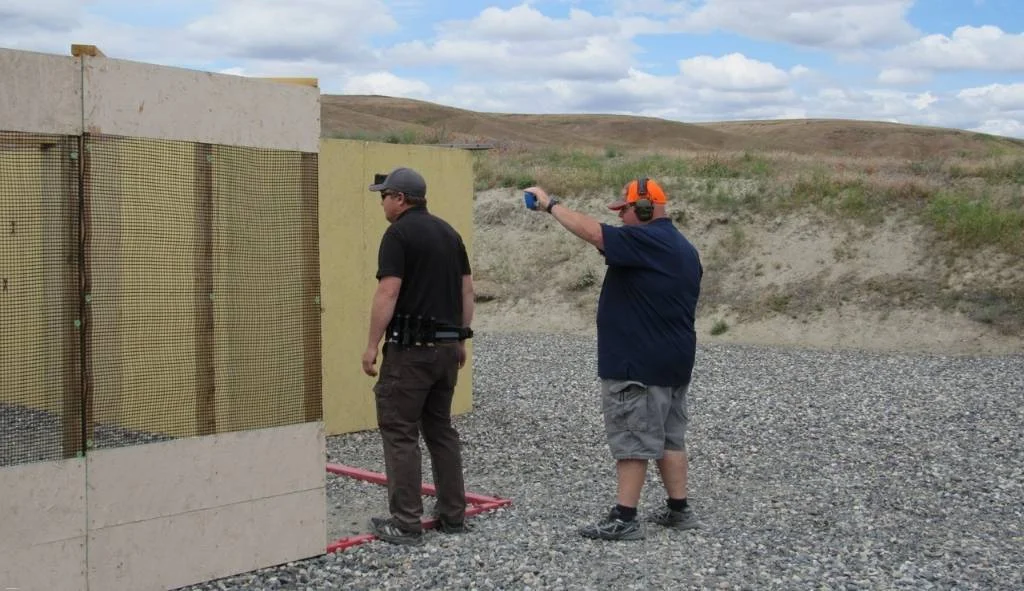
Types of Ranges and Their Specific Considerations
Different types of shooting ranges may have unique safety considerations. Here’s an overview of common range types and what to keep in mind:
Indoor Ranges
Indoor ranges typically have:
- Controlled lighting and climate
- Automated target retrieval systems
- Stricter rules about ammunition types and firearm calibers
Considerations for indoor ranges:
- Be aware of increased noise due to enclosed space
- Pay attention to ventilation systems to avoid lead exposure
- Follow specific rules about target placement and retrieval
Outdoor Ranges
Outdoor ranges often feature:
- Longer shooting distances
- Natural lighting and weather conditions
- Multiple firing lines for different distances
Considerations for outdoor ranges:
- Be prepared for changing weather conditions
- Use appropriate targets for longer distances
- Be aware of potential wildlife in the area
Action Shooting Ranges
Action shooting ranges, used for competitive shooting sports, may have:
- Multiple shooting positions
- Moving targets
- Obstacles or barriers
Considerations for action shooting ranges:
- Strictly adhere to the 180-degree rule
- Be extra cautious when moving with a firearm
- Follow stage-specific safety briefings
Common Range Commands and Their Meanings
Understanding range commands is crucial for safe and efficient range operations. Here are some common commands you might hear:
“Range is Hot”
- Shooting may commence
- Firearms can be loaded and fired
“Range is Cold”
- Cease all firing
- Unload all firearms and make them safe
“Cease Fire”
- Stop shooting immediately
- Keep firearms pointed downrange
- Wait for further instructions
“Make Safe”
- Unload your firearm
- Lock the action open
- Place the firearm on the bench pointing downrange
“Load and Make Ready”
- Load your firearm
- Prepare to begin shooting
“Unload and Show Clear”
- Remove all ammunition from the firearm
- Lock the action open
- Allow the RSO to verify the firearm is unloaded
Handling Firearm Malfunctions Safely
Knowing how to handle firearm malfunctions safely is an important skill for any shooter. Here are some common malfunctions and how to address them:
Misfire
If your firearm fails to fire when you pull the trigger:
- Keep the muzzle pointed downrange
- Wait at least 30 seconds before opening the action
- Carefully remove the round and dispose of it properly
Squib Load
A squib load occurs when a bullet doesn’t have enough power to exit the barrel:
- Stop shooting immediately
- Keep the muzzle pointed downrange
- Notify the RSO
- Have the firearm inspected by a qualified gunsmith before firing again
Double Feed
If two rounds try to enter the chamber simultaneously:
- Keep the muzzle pointed downrange
- Remove the magazine
- Lock the slide or bolt to the rear
- Clear both rounds from the chamber
Proper Firearm Transportation and Storage at the Range
Safely transporting and storing your firearm at the range is an important aspect of range safety. Here are some guidelines:
Transporting Firearms to the Range
- Use a proper gun case or range bag
- Ensure firearms are unloaded during transport
- Keep ammunition separate from firearms
Storing Firearms at the Range
- Always use provided gun racks or benches
- Keep firearms unloaded when not in use
- Use chamber flags or safety indicators when appropriate
Moving Firearms on the Range
- Keep the muzzle pointed in a safe direction
- Use both hands to carry firearms
- Never walk around with a loaded firearm off the firing line
Range Safety for New Shooters
If you’re new to shooting, here are some additional tips to ensure a safe and enjoyable experience:
Take a Safety Course
- Many ranges offer beginner safety courses
- Learn proper handling techniques before shooting
Start with a Smaller Caliber
- Begin with .22 caliber firearms to build confidence
- Gradually work your way up to larger calibers
Ask for Help
- Don’t be afraid to ask the RSO or experienced shooters for advice
- Most shooters are happy to help newcomers learn safely
Practice Proper Stance and Grip
- Learn and practice proper shooting techniques
- This improves accuracy and safety
Frequently Asked Questions
Here are some common questions about range safety and etiquette:
Can I bring my own targets to the range?
Most ranges have specific rules about targets. Check with the range beforehand to see what types of targets are allowed.
What should I do if I see someone breaking safety rules?
If you observe unsafe behavior, notify the RSO immediately. Do not confront the person directly.
Is it okay to share firearms at the range?
Sharing firearms is generally allowed, but always check with the RSO first and ensure proper safety procedures are followed.
How often should I clean my firearm when shooting at the range?
Clean your firearm after each range session to maintain its performance and longevity.
What should I do if I have a medical condition that might affect my shooting?
Inform the RSO of any medical conditions that could impact your ability to shoot safely.
